第3章 1(3)
For a couch is such and such a form embodied in this or that matter, or such and such a matter with this or that form; so that its shape and structure must be included in our description. For the formal nature is of greater importance than the material nature.
Does, then, configuration and colour constitute the essence of the various animals and of their several parts? For if so, what Democritus says will be strictly correct. For such appears to have been his notion. At any rate he says that it is evident to every one what form it is that makes the man, seeing that he is recognizable by his shape and colour. And yet a dead body has exactly the same configuration as a living one; but for all that is not a man. So also no hand of bronze or wood or constituted in any but the appropriate way can possibly be a hand in more than name. For like a physician in a painting, or like a flute in a sculpture, in spite of its name it will be unable to do the office which that name implies.
Precisely in the same way no part of a dead body, such I mean as its eye or its hand, is really an eye or a hand. To say, then, that shape and colour constitute the animal is an inadequate statement, and is much the same as if a woodcarver were to insist that the hand he had cut out was really a hand. Yet the physiologists, when they give an account of the development and causes of the animal form, speak very much like such a craftsman. What, however, I would ask, are the forces by which the hand or the body was fashioned into its shape? The woodcarver will perhaps say, by the axe or the auger; the physiologist, by air and by earth. Of these two answers the artificer's is the better, but it is nevertheless insufficient. For it is not enough for him to say that by the stroke of his tool this part was formed into a concavity, that into a flat surface; but he must state the reasons why he struck his blow in such a way as to effect this, and what his final object was; namely, that the piece of wood should develop eventually into this or that shape. It is plain, then, that the teaching of the old physiologists is inadequate, and that the true method is to state what the definitive characters are that distinguish the animal as a whole; to explain what it is both in substance and in form, and to deal after the same fashion with its several organs; in fact, to proceed in exactly the same way as we should do, were we giving a complete description of a couch.
If now this something that constitutes the form of the living being be the soul, or part of the soul, or something that without the soul cannot exist; as would seem to be the case, seeing at any rate that when the soul departs, what is left is no longer a living animal, and that none of the parts remain what they were before, excepting in mere configuration, like the animals that in the fable are turned into stone; if, I say, this be so, then it will come within the province of the natural philosopher to inform himself concerning the soul, and to treat of it, either in its entirety, or, at any rate, of that part of it which constitutes the essential character of an animal; and it will be his duty to say what this soul or this part of a soul is; and to discuss the attributes that attach to this essential character, especially as nature is spoken of in two senses, and the nature of a thing is either its matter or its essence; nature as essence including both the motor cause and the final cause. Now it is in the latter of these two senses that either the whole soul or some part of it constitutes the nature of an animal; and inasmuch as it is the presence of the soul that enables matter to constitute the animal nature, much more than it is the presence of matter which so enables the soul, the inquirer into nature is bound on every ground to treat of the soul rather than of the matter. For though the wood of which they are made constitutes the couch and the tripod, it only does so because it is capable of receiving such and such a form.